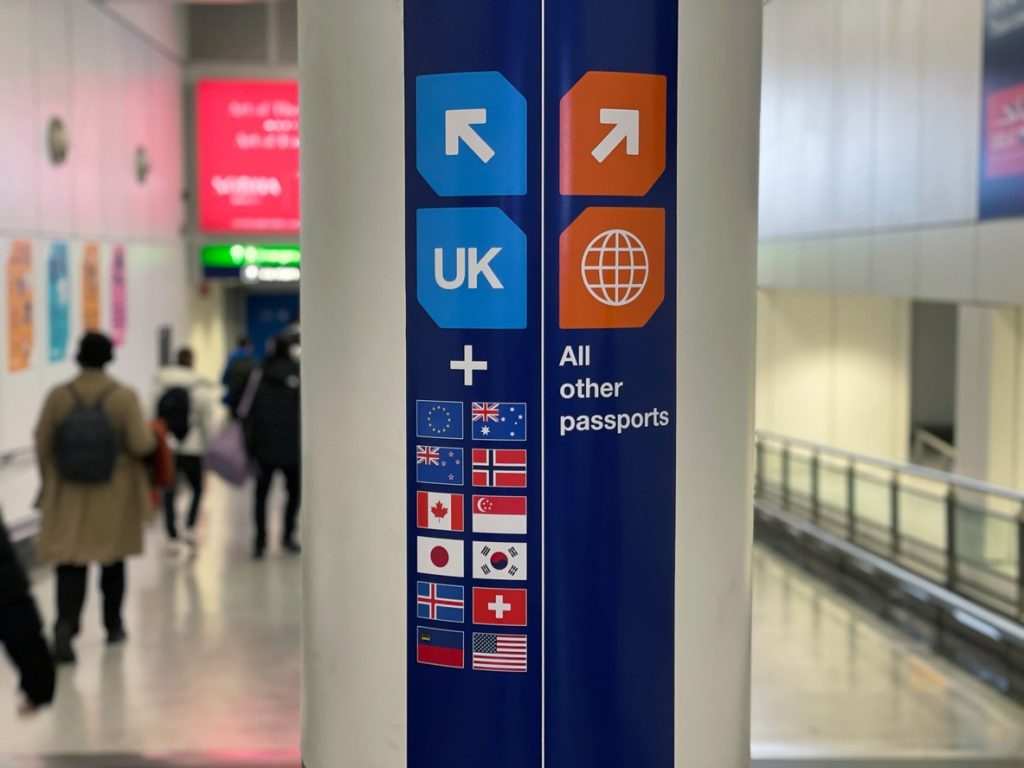
A look back at the first year of the UK’s Electronic Travel Authorisation scheme
A Year in the Making
On 25 October 2025, the UK’s Electronic Travel Authorisation (ETA) will turn one. Since its introduction, over 13.4 million ETAs have been granted up to the end of June 2025, according to Home Office data.
The ETA was introduced as part of the Government’s ambition to digitalise the UK border by 2025, creating a more data-driven pre-clearance system for travellers. It forms a central part of the Home Office’s wider plan to deliver a more streamlined, secure and efficient immigration system.
Under the scheme, nationals who do not normally require a visa to enter the UK as a Visitor — those coming for tourism, business, or other short-term activities permitted under the Visitor route — must now obtain a digital authorisation before departing for the UK. The policy was designed to enable pre-arrival screening, allowing potential risks to be identified before travellers reach the border and thereby enhancing border security.
A Global Model
The UK’s ETA follows comparable systems already in place in the United States (ESTA), Canada (eTA) and New Zealand (NZeTA), and aligns with the European ETIAS scheme, now expected to launch in 2026.
An important clarification is that ETA confers permission to travel – not permission to enter the UK. ETA holders arriving at the UK border remain subject to immigration control; in practice, however, additional checks on those arriving are unusual.
It is also important to note that the ETA does not replace or affect the visa process for those who require one to enter the UK, whether for tourism, business trips or substantive work.
A Closer Look
The ETA introduced a new administrative step – an online application and small fee – but the minor inconvenience for travellers was said to be balanced by the Government’s aim of making border processing more efficient once passengers arrive.
Applications are submitted via the Home Office app or online portal, with decisions typically issued within minutes, though they can take up to three working days. Once approved, ETA clearance remains valid for two years or until the individual’s passport expires, whichever comes first, and can be used for multiple short visits for tourism, business or transit purposes. However, visits must still fall within the UK’s existing immigration framework – including the maximum permitted stay of six months.
Whether an individual requires an ETA depends on both nationality and reason for travel. Some travellers, such as British and Irish passport holders, are exempt. Others – those coming to live, work or study in the UK (for example, under the Skilled Worker route or the EU Settlement Scheme) – must instead obtain the appropriate visa before travelling.
Where an ETA application is refused, there is no right of appeal or administrative review. The Home Office will provide the decision, and depending on whether the application is rejected or refused applicants may either reapply (paying the processing fee again) or apply for a formal Visitor visa, or in case of those intending to travel under Creative Worker concession (which enables eligible creative workers to come to the UK for up to 3 months), for a Temporary Work – Creative Worker visa.
Challenges
As with most large-scale digital rollouts, the ETA’s first year has brought some challenges.
Dual citizens: individuals holding both British (or Irish) citizenship and another ETA-eligible nationality initially encountered difficulties with the new system. Under current rules, British and Irish citizens cannot apply for an ETA. However, if they do not yet hold a British or Irish passport, they may be unable to evidence their ETA-exempt status when travelling. This has proven particularly problematic for those who have recently naturalised as British citizens but have not yet received their first British passport – a process that can take up to 10 weeks – or confirmation of their right of abode, which can take 2-3 months.
In response, the Home Office have issued temporary operational guidance to carriers advising them not to deny boarding to passengers who could not present a British passport but could otherwise evidence British or Irish nationality. The measure was introduced to ease the transition to the UK’s new digital border framework; however, in future, travellers with dual British or Irish and ETA-eligible nationality who do not hold a valid British or Irish passport may face delays or complications when travelling to the UK.
Technical issues: early users reported intermittent glitches when uploading photographs or completing payments through the Home Office app – issues that were acknowledged and largely resolved through system updates.
Policy recalibration: the list of eligible nationalities has changed since launch, with some countries removed from ETA eligibility following concerns about misuse of Visitor permissions and immigration risks, prompting tighter controls by the Government.
Transit exemptions: following feedback from the aviation industry, the Government introduced a temporary exemption from the ETA requirement for passengers transiting airside (ie. not passing through UK border control). This exemption remains under review.
These developments reflect the fact that the UK’s digital border policy is inherently dynamic. Eligibility and process decisions are increasingly informed by live operational data, meaning further adjustments are likely as the scheme matures and as more data becomes available to policymakers.
Looking Ahead
A year into its operation, the ETA has achieved much of what it set out to do: digitising pre-travel authorisation, enhancing security and modernising the UK’s approach to managing short-term arrivals, and the system is now a central feature of the UK’s border ecosystem.
As mobility becomes increasingly data-driven, the UK’s experience in rolling out ETA offers valuable lessons for the forthcoming European Travel Information and Authorisation System (ETIAS), whose rollout has now been postponed until late 2026.
For further information or advice on short- or long-term UK travel and immigration routes, please contact Kasia Kingsmill, Partner at Brecher LLP, at kkingsmill@brecher.co.uk.
This update is for general purpose and guidance only and does not constitute legal advice. Specific legal advice should be taken before acting on any of the topics covered. No part of this update may be used, reproduced, stored or transmitted in any form, or by any means without the prior permission of Brecher LLP.




